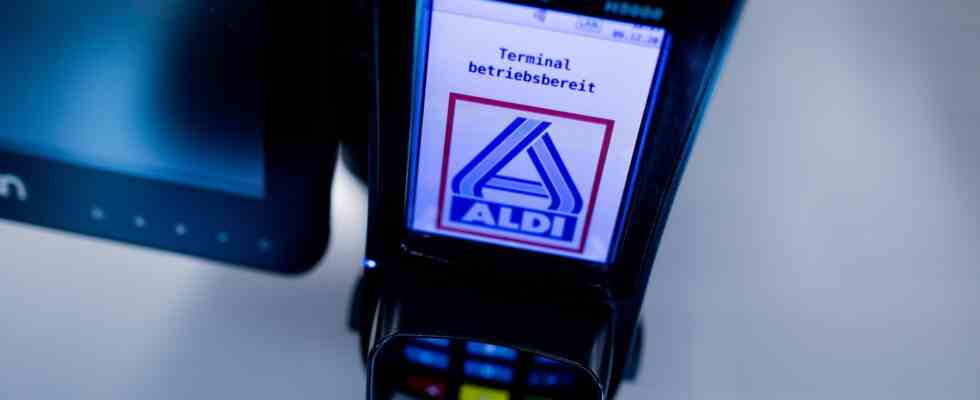Status: 07/19/2022 08:08 a.m
Faulty devices made card payments impossible for days, sometimes even longer. The problems have now been resolved almost everywhere in Germany. Many of the affected card terminals have been replaced.
It began at the end of May: Suddenly, payment by giro or credit card no longer worked in numerous shops, but also in other establishments. The card terminal H5000 from the provider Verifone was affected. To this day, the background is unclear. According to an official statement from Verifone, the cause of the disruption is to be found in an “expired time stamp signature in the platform software of the Verifone H5000 terminal”.
Service providers hardly ever report any disruptions
The fact is: card payments are now working smoothly almost everywhere. According to the payment service providers responsible for providing the terminals, they have been able to provide solutions to almost all of their customers. The service provider told Payone tageschau.de: “Payone was able to rectify or replace most of the affected terminals with a software update.” The resumption of cashless payment for all retailers who were affected by the Verifone H5000 disruption is now largely complete.
“However, we assume that there are very few unreported devices whose faults have not yet been reported to us or which have not been actively used for a long time,” Payone continues. “Individual inquiries from our customers that still reach us are dealt with by deploying technicians on site or with the support of our regular service units.”
The service provider Concardis is also opposite tagesschau.de that the problems have been taken care of. They have “remedied the disruption in all acutely affected H5000 terminals of our dealer customers.” In around 95 percent of the cases, the terminals were exchanged for more modern devices. The software update provided by Verifone was only used in individual cases, as was the changeover to the electronic direct debit procedure (ELV), which was previously widespread and for which customers have to sign. Both of these “were only used by our dealer customers to solve problems in a few individual cases where the dealer acutely affected by the fault expressly did not (yet) want a terminal exchange on an ad hoc basis.”
Not all terminals were affected
According to Concardis, there were problems with 4,000 of around 8,300 H5000 terminals – that is, with almost half. Nevertheless, the payment service provider has now replaced almost all devices at 95 percent. And in the future, too, remedial action can be taken at any time, as there are still enough replacements in stock: “With currently 40,000 to 50,000 terminals, our stocks are still very well stocked. We have sufficient capacity to deal with affected dealers who are considering changing terminals, to support.”
Concardis also provides specific information on how the problem was solved technically: “Bots used specifically for the incident analyze fully automatically where there is a very high probability of an incident. Our dealer receives information, we check which modern terminal is best and send it it to him free of charge.” As soon as the new terminal arrives at the retailer, they can usually simply plug it in and start it up using plug-and-play and send the old device back – also free of charge. “If help is still required, service employees and a team of specialists can be reached via a service hotline,” says Concardis.
HDE demands precise processing
A survey of 800 retail companies published by the German Retail Association (HDE) at the beginning of the month showed that the widespread failure of the payment terminals had consequences for the retailers affected. According to this, 22 percent of the companies surveyed reported outages for days, and three quarters of them had to complain about lost sales as a result. Among other things, branches of Aldi Nord, Edeka or the Edeka subsidiary Netto were affected.
“The disruptions that occurred a few weeks ago at many payment terminals were of an unprecedented dimension,” says HDE Managing Director Stefan Genth. This was more than just an annoyance for many of the retail companies affected. “Sales were lost here, and customers were extremely unsettled at times.” Genth demanded that the terminal operators work through the causes transparently and ensure that such a complete failure cannot happen again in the future. Genth brought up emergency systems or better internal security measures for this purpose.
Disruption usually lasted more than a week
As the HDE survey showed, the disturbances lasted at least four days for 83 percent of those affected. 70 percent of those surveyed stated that they had to be without the terminal for more than seven days. After all, customers could sometimes pay using alternative methods – including purchase on account, direct debit or PayPal. Some dealers used terminals from other manufacturers.
Since the outbreak of the corona pandemic, cashless payment has been on the rise in Germany. According to a study published in early May by the Cologne-based retail research institute EHI, the share of card payments in bricks-and-mortar retail increased from 50.5 percent in 2019 to 58.8 percent last year.

